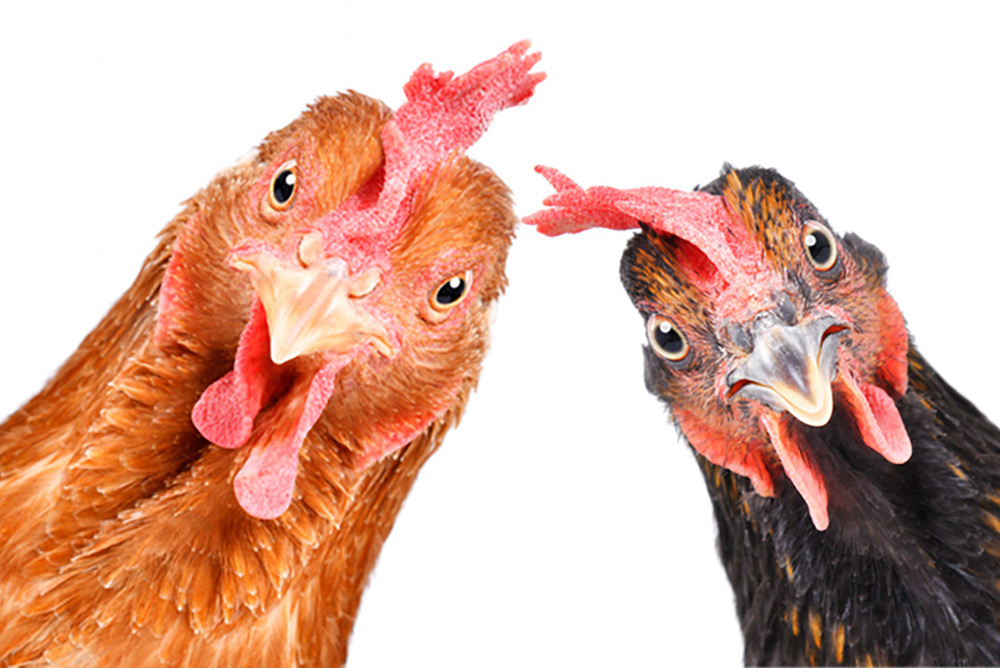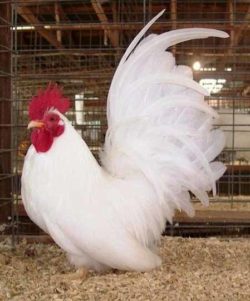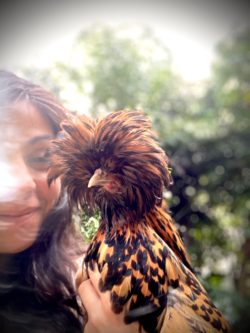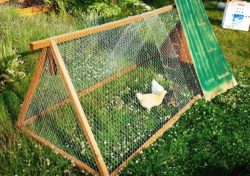By Nancy Pollard
After owning one of the best cooking stores in the US for 47 years—La Cuisine: The Cook’s Resource in Alexandria, Virginia—Nancy Pollard writes Kitchen Detail, a blog about food in all its aspects—recipes, film, books, travel, superior sources, and food-related issues.
 IN PENNSYLVANIA during the 1950s, a dutiful parent could go to the corner hardware store and buy either a baby chick or duckling for his children on Easter. This retail practice, which also included dying them in colors that would make a plastic unicorn blush, is still allowed in certain areas. My father bought me a chick for Easter, and even though it was surely not the wisest purchase for a child of 8, I fell in love. My little chick turned out to be a type of white Bantam rooster, and somehow I raised it with my parents’ help. I christened him Cocktail. He was devoted to me and would wait at the end of the farm driveway in the afternoons when I would walk home from the school bus stop. I would feed him in the morning and take him out of his coop, which was fashioned from a small shipping crate. He listened to all my tall tales (I had many) in the afternoon. I would feed him and put him safely away in his crate in the kitchen at night. At some point my parents decided that it would be best if he were moved to the basement. I can’t say that I blame them in retrospect. As you will read in an upcoming post, roosters do not crow only at the crack of dawn. One day, when I came home from school, there was no Cocktail greeting me at the end of the driveway, but rather my father. A predator, probably a weasel, had squeezed into the dry stone walls of the basement and had killed Cocktail. I was beside myself with grief. Even though I was promised a pet when we moved to Washington, that turned out to be a chameleon bought by my grandfather at a Ringling Bros. Circus or, later, occasional goldfish from the G.C. Murphy dime store. I still miss Cocktail.
IN PENNSYLVANIA during the 1950s, a dutiful parent could go to the corner hardware store and buy either a baby chick or duckling for his children on Easter. This retail practice, which also included dying them in colors that would make a plastic unicorn blush, is still allowed in certain areas. My father bought me a chick for Easter, and even though it was surely not the wisest purchase for a child of 8, I fell in love. My little chick turned out to be a type of white Bantam rooster, and somehow I raised it with my parents’ help. I christened him Cocktail. He was devoted to me and would wait at the end of the farm driveway in the afternoons when I would walk home from the school bus stop. I would feed him in the morning and take him out of his coop, which was fashioned from a small shipping crate. He listened to all my tall tales (I had many) in the afternoon. I would feed him and put him safely away in his crate in the kitchen at night. At some point my parents decided that it would be best if he were moved to the basement. I can’t say that I blame them in retrospect. As you will read in an upcoming post, roosters do not crow only at the crack of dawn. One day, when I came home from school, there was no Cocktail greeting me at the end of the driveway, but rather my father. A predator, probably a weasel, had squeezed into the dry stone walls of the basement and had killed Cocktail. I was beside myself with grief. Even though I was promised a pet when we moved to Washington, that turned out to be a chameleon bought by my grandfather at a Ringling Bros. Circus or, later, occasional goldfish from the G.C. Murphy dime store. I still miss Cocktail.
Fueled by lingering grief, I have nursed a farfetched dream of having a potager with a somewhat foggily designed and decorated farmhouse in either France or Italy, with a couple of good layers. But then reality hits. Fortunately, though, we are close to two very urban couples—one a transplant from France and one from Montana and Bolivia — who plucked up their courage to raise chickens in their backyards. Mike and Nils are the technological backbone of Kitchen Detail. Their adventures and knowledge are hard won, hilarious, grisly and life-affirming. I want to share their stories with you.
Confronting the Dream
Mike and Susie live in Florida and had always romanticized the idea of living on a farm and being self-sufficient. If you read about market gardeners and small farmers, you know that parcels of affordable arable land are hard to find. Once they bought their current home, they realized that time constraints and modern-day obstacles made their dream of self-sufficiency impossible to achieve. A big garden setup with veggies, fruit trees, and chickens could get closer to their goal. And as Mike says presciently, “In a post-apocalyptic world, having real knowledge about chicken farming and growing food might just make the difference between keeping alive or not. Plus, it’s fun, and chickens are cute and pretty funny to watch.”
For Sonia and Nils, while they first thought about living and working on a farm, the hard work and its precarious future made them realize how financially and physically impractical it was. Sonia had wonderful memories of spending summers with her grandmother in Franche-Comté, where there was a large vegetable and fruit garden . . . and chickens, which Sonia took great interest in plucking. She and Nils spent hours on the Internet looking at videos and reading stories and blog entries about chickens, and I of course offered to look after the chickens when they traveled! When the Covid lockdown became a reality, Nils and Sonia decided to purchase four chickens from a local farm supply outlet. The timing was right, as the four chicks provide entertainment and education for their two children—and for themselves.
Both couples advise to focus on the information from the-chicken-chick.com for the information you truly need. And this site has a lot of delightfully distracting articles, too, if you simply want to enjoy dreaming about eggs, chickens, and coops. If you cannot find a local source for your chicks, Mike highly recommends Hoover’s Hatchery, and surprisingly, Craigslist has listings for chicks, and hens that are already layers.
Of Critters and Coops
The first thing Nils and Sonia did once they decided to purchase their little chicks was to borrow a humane trap from a neighbor. They had never seen an opossum or weasel in their yard but once spotted a raccoon eating their cat’s food—while the cat patiently watched. So they laid the trap and, lo and behold, the next morning and the morning after that: This, left, is what was unhappily waiting for them. Even though I had sent them a recipe for fricasseed raccoon and hints about fashioning a coonskin hat for their kids, Nils very kindly freed them both by the Potomac River.
Mike advises that coop placement is not a haphazard decision, because coops attract mice, rats, and cockroaches like crazy. Also, when it rains a lot, the flies and the stench can be brutal. Mike’s architectural designs were not ambitious but rather practical, and chicken apartments were added as needed. Nils, however (after all he is French) designed and built himself a Château des Poules based on a Belgian design that appealed to them. They even used broken chair legs as roosts. The windows have shutters with little red rooster handles. They improved on the original design, making it taller so that you could stand inside the coop and chicken courtyard. These alterations make it easier to clean and maintain the coop and to collect eggs without stooping.
A final word of caution from both couples on coop real estate: Do not think that a small urban garden will co-exist happily with your chickens. Gardens have to be in a separate area unless you can control where your creatures graze. Both Mike and Nils found that chickens are like piggies with feathers. They eat EVERYTHING. Their feed, what’s on the patio table, your flowers, probably the chance Lego or Barbie doll accessory will be tasted. If your seedlings and plants aren’t chicken-edible, they will try to dig them up. As barefoot children find out early on, chickens poop everywhere, even on their eggs and in their drinking water. You may want to consider a chicken tractor to regulate their production of fertilizer and guide their helpful insect-eating propensities






